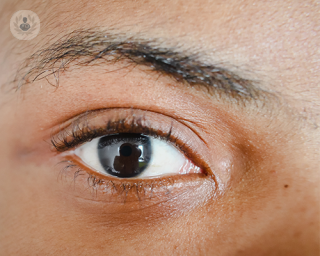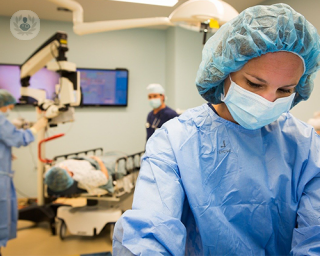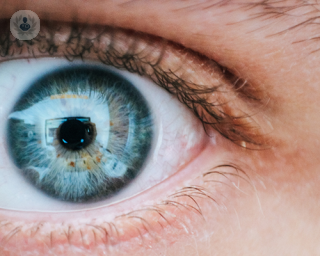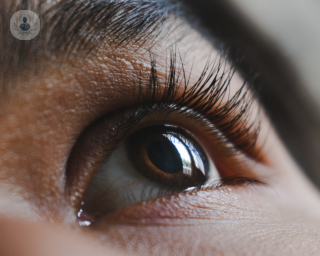Thyroid eye disease
Mr Richard Scawn - Ophthalmology
Created on: 11-13-2012
Updated on: 09-21-2023
Edited by: Carlota Pano
What is thyroid eye disease?
Thyroid eye disease (TED) is an autoimmune disease in which the cells that protect us from infections or other aggressive agents act defectively, attacking different organs or tissues of the body such as the thyroid and eyes. In most patients, the same autoimmune disease that causes TED also affects the thyroid gland, which results in Graves’ disease.

What are the symptoms of thyroid eye disease?
The eye muscles, eyelids, tear gland and fatty tissues behind the eyes are inflamed with thyroid eye disease. This leads to red, swollen eyes, which can be pushed forward and leaves the eyes looking as though they are bulging.
In same cases, there is double vision because the swollen eyes mean that the eyes are no longer able to move in line with each other. The eyes may also be watery, intolerant of bright lights, and there are bags under the eyes.
How is thyroid eye disease treated?
If the eyes are teary and you feel uncomfortable looking at bright lights, then artificial tear drops can help the eyes feel more comfortable and protect the surface of your eyes. These can be used with eye drops, gels, and eye ointments. The symptoms should stabilise after six months and it can take up to two years before the inflammation has gone completely.
Inflammation may need treatment with steroids, which can reduce double vision by helping inflamed eye muscles to move more freely. In more severe cases of TED, steroids can help to restore sight. They can be combined with other treatments, such as immunosuppressive agents and radiotherapy.
Some people with thyroid eye disease are left with permanent double vision or the appearance in their eyes has changed. Surgery may be required to treat the double vision and to protect the eyes.










